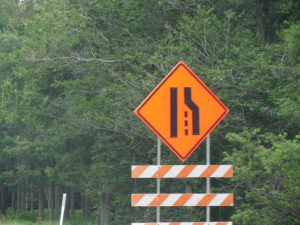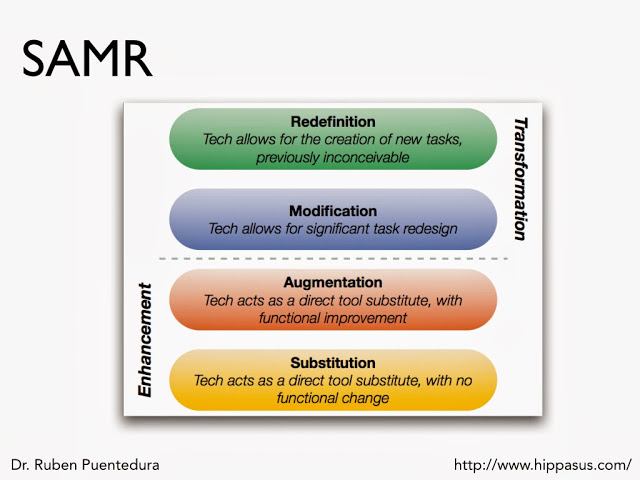
As I said in an earlier blog post this fall, the vision for the curriculum or technology coach must align with the district’s instructional vision. In the same stead, shouldn’t the vision of 21st Century instruction by teachers align with the district vision? I thought about this as I pondered our week’s question, “What skills, resources, and processes will you use as you co-plan learning activities your learning partners want to improve?” I decided to look at what documents teachers in my district are already provided and encouraged to use as a possible starting point.
Instructional expectations have changed significantly in recent years
Instructional expectations have changed significantly in recent years. “In 2012 The Teacher/Principal Evaluation Program was born out of Engrossed Second Substitute Senate Bill 6696 during the 2010 legislative session…The bill created our pilot project and moved the state from a two-tiered system of unsatisfactory, to a four-tiered evaluation system. In addition to moving to a four-tiered system, the legislation created eight new criteria for teachers and principals to be evaluated upon…” (Anderson, 2016). From that, Washington State school districts choose to adopt one of three instructional frameworks: CEL5D, Danielson, or Marzano. These frameworks outlined what quality teaching looks like. All are research-based. None call on technology integration directly.
As a coach, I bring this up because I feel that the teacher’s instructional framework is the first lens a teacher should examine their lesson through. That is the district’s instructional vision! Instruction, not technology. One of my favorite books, Improving Achievement with Digital Age Best Practices by Christopher Moersch, grounds my thinking on this, “The danger with rolling out an initiative such as a new teacher evaluation system is the potential push back from key stakeholders (e.g. teachers) when competing and, in many instances, complementary initiatives and professional development opportunities are compromised or eliminated so that everyone can focus on the newest ‘flavor of the month’” (p. 107). This statement really supports my decision to not overwhelm teachers with a multitude of documents or links. Intentional selection of resources is critical.
Intentional selection of resources is critical.
My district’s University of Washington’s 5 Dimensions of Teaching and Learning (CEL5D) includes a Smart Card. Every teacher has a physical and digital copy. The Smart Card is similar to those in the Marzano and Danielson frameworks, but it is also unique because it contains inquiry questions. ISTE Coaching Standard 2 tasks me with using research-based practices. It states in 2f, “Coach teachers in and model incorporation of research-based best practices in instructional design when planning technology-enhanced learning experiences.” The Smart Card gets at research-based best practices.
Reading through these inquiry Smart Card questions, I think they present great opportunities to discuss technology integration. For example, in the Student Engagement (SE) dimension, one inquiry question is: “What is the frequency of teacher talk, teacher-initiated questions, student-initiated questions, student-to-student interaction, student presentation of work, etc.?” Each teacher in my district has an area of focus they are concentrating on for the year. The teacher I’m working with wanted to increase engagement, specifically student talk. I see this serving as a third point in a conversation. Without coming off as the expert, which I’m not anyway, we could together turn to this card for the definition of student talk. It gives clarity. Do the technology tools selected support his goals? This is where I can provide thoughtful input. As Les Foltos says, “Coaches who assist teachers in identifying software or hardware that helps students complete learning tasks are playing a key coaching role” (p. 137).
Put your energy into the change teachers are already committing to.
Only so much change can be put in a system and have it sustain, put your energy into the change teachers are already committing to. Whether your district is on CEL5D or not, every teacher should have an instructional area of focus. ISTE Coaching Standard 1d states, “Implement strategies for initiating and sustaining technology innovations and manage the change process in schools and classrooms.” Find the access points for technology within your district’s adopted instructional framework! My conversation about student talk shows that great conversations about technology integration can build from an area of focus conversation.
As part two of my investigation this week, I tried to locate a lesson plan template that specifically included technology considerations. I found one by Dr Chris Moersch called the LoTi Lesson Template. I liked the standards and deep thinking skills emphasis. I also like the essential questions and differentiation piece. In the end, it seemed a little lengthy. I kept looking. I also came across this LoTi rubric where a teacher could self-evaluate their lesson plan or a coach could use it in the lesson revision process. It was very characteristic focused.
All in all, I am deciding that besides the Framework Smart Card, the resources I most want to share with teachers are: Ruben Puentedura’s SAMR Model and Les Foltos’ Learning Activity Checklist. The SAMR model emphasizes rich integration rather than technology for technology’s sake and that is an easy, yet important concept for teachers to understand. The Learning Activity Checklist (p. 111) is also simple for teachers to understand. The topics in the four quadrants (standards-based, engaging, problem-based, or technology enhanced) provide overlap between the district’s instructional goals and technology integration. It brings in some 21st Century Skills, such as real-world situations and problem-solving processes that are not explicitly emphasized on the Smart Card.

There are plenty of entry points for development of 21st century skills in the instructional frameworks and lesson plans. By walking through a lesson plan thoughtfully with your learning partner, you can find opportunities to promote problem solving, foster critical thinking, encourage collaboration, bolster communication, and ignite creativity. 21st Century Skills and the instructional frameworks intersect again and again. However, the frameworks don’t name these intersections. That is where the expertise of tech coach become valuable. So, how do you do that as a technology coach? You do this by being curious. Sometimes your curiosity naturally brings questions to mind and sometimes you need a checklist to prime your pump to merge the ideas.
Works Cited
Anderson, S. (2016). Teacher/principal evaluation program. Retreived from http://www.k12.wa.us/TPEP/
Colin. (2008). Merge. Retrieved from https://flic.kr/p/589FNe
Foltos, L. (2013). Peer coaching: unlocking the power of collaboration. Thousand Oaks, CA: Corwin.
International Society for Technology in Education. (2011). ISTE standards for coaches.
Retrieved from http://www.iste.org/standards/ISTE-standards/standards-for-coaches
Moersch. C. (2014). Improving achievement with digital age best practices. Thousand Oaks, CA: Corwin.


